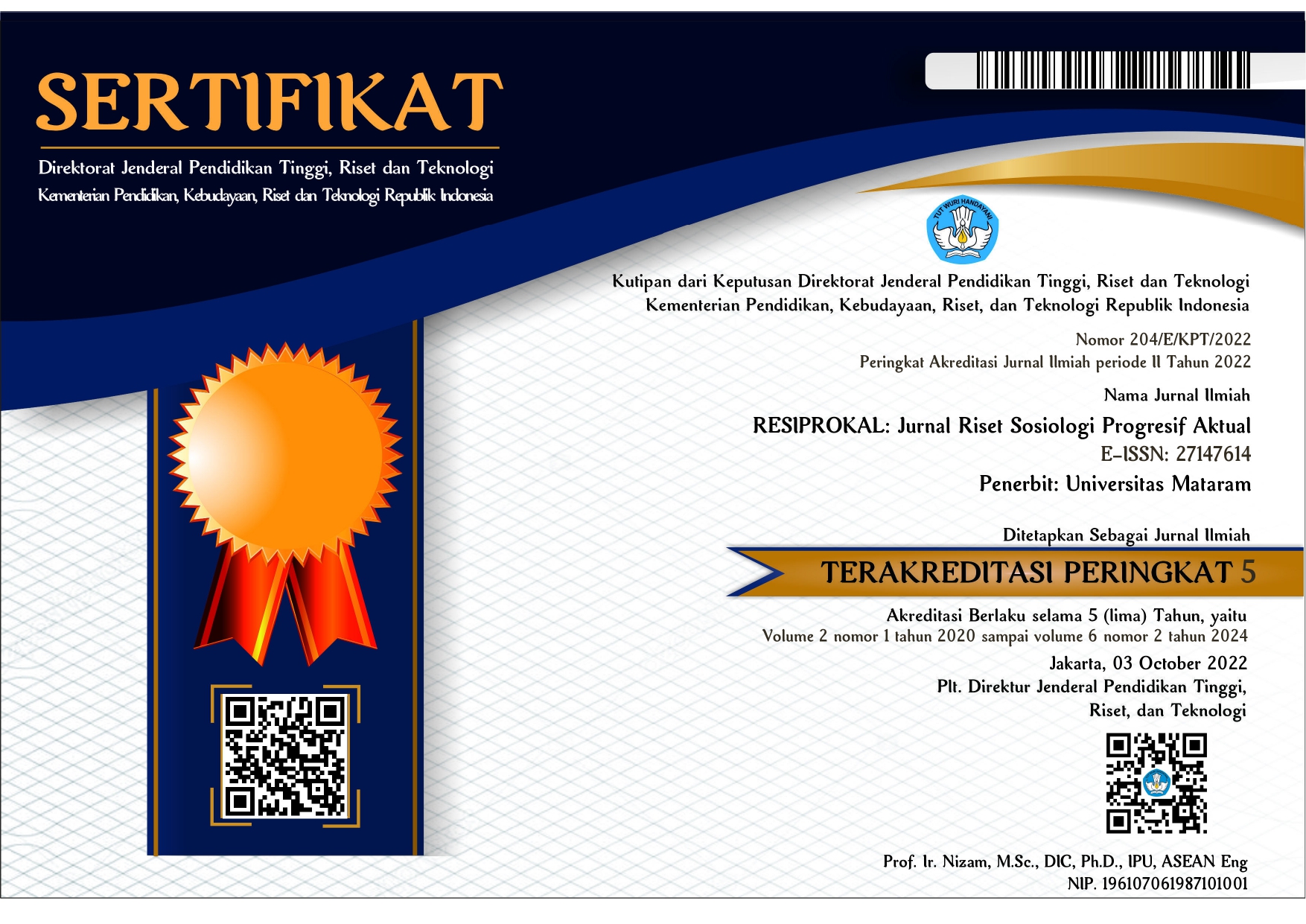SEME PEREMPUAN SUMBAWA
Studi Kasus Perempuan di Desa Plampang, Sumbawa
DOI:
https://doi.org/10.29303/resiprokal.v1i2.14Keywords:
Sumbawanese Women, Seme, Traditional.Abstract
The research entitled Seme Perempuan Sumbawa (A case study about women in Plampang
Village, Sumbawa) aims to find out the function and meaning of 'g' as it commonly used by
Sumbawanese women, especially in Plampang Village. The utilization of 'seme' is generally
to protecting and caring the skin of Sumbawanese women in Plampang Village. This
research used Social Construction theory with Symbolic Interactionism theory. This
research used qualitative research methods. Based on the results of the research, the use of
'seme' that is conducted by Sumbawanese women especially in Plampang Village is based
on the concept of beauty that develops in society, where beautiful women are those who are
good at caring for themselves. Besides that, there is a motive underlying the women in
Plampang Village in using seme, which is the desire to look more maintained by using seme.
The Seme itself has five functions such as a traditional sunblock, the regular use of the seme
is believed to be a traditional facial brightener and smoothener. In additional, it also helps
to treat and preserve the skin beauty and to remove something like pimples and black spots.
The last function of seme is to tighten and beautify Sumbawanese women's skin especially in
Plampang Village. The use of seme is meant everything for them, it's so meaningful for the
women in the social life and the last it meant as a media in maintaining the beauty of
Sumbawanese women especially in Plampang Village.








